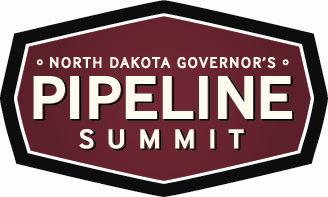By: Bob van der Valk
Traffic on the interstate highways and rails has become part of the way modern way of life. Rail tanker car traffic hauling crude oil increased in multiples over the last five years and will continue to do so every year until more infrastructure is build to handle all of this new found oil. Additional crude oil production in the Williston basin, within the Bakken Shale Formation is going at full speed on our way toward make our country energy secure.
The US and Canada rail systems are currently being over utilized with the lack of infrastructure reaching the point of having major accidents. The one in Lac-Mégantic near Quebec on Saturday, July 6th killed up to 53 people along with destroying most the small village. Railroad tracks laid over 100 years ago are still being used today but with higher and heavier traffic than for which they were originally designed.
The 70 thousand barrels of Bakken sweet light crude oil was being shipped via rail from Trenton, North Dakota to Saint John, New Brunswick with eventual delivery destination of the Irving Oil refinery. World Fuel Services had title to the crude oil and 50 thousand barrels were lost in the derailment caused by human error. The MM&A engineer had stopped the 102 chain of rail cars without setting the brake. While he walked to town to get some rest the train rolled backwards eventually derailing and exploding into a fireball killing people and destroying most of the town.
You may not like pipelines or fossil fuels but the most efficient and safest way to move the highly volatile sweet Bakken Oil crude oil is by pipeline. Increased hauling of crude oil with our overused and in some cases antiquated rail system may well turn out to be “Hell on Wheels”.
The town of Lac-Mégantic near Quebec Canada was named for the lake near which it is located and was named by the Amerindian Abernaki tribe. It means “Place Where the Fish Are Held” and Lac is the French word for Lake. The small village is about 20 miles north of the Maine border
As environmental disasters go, the explosion Saturday, July 6, 2013 of a runaway crude oil tanker train is a major catastrophe. One thousand people were forced to evacuate the immediate area. Quebec’s environment minister reported 26,000 gallons of crude oil spilled into the Chaudière River and could possibly reach Quebec and the St. Lawrence River before too long.
The derailed 72-car train belonged to MM &A, which is a subsidiary of Illinois-based multinational Rail World, and was carrying North Dakota shale oil extracted by hydraulic fracturing to the massive Irving Oil refinery in the port city of Saint John in New Brunswick, Canada. They refine the crude oil into gasoline and diesel. Irving then uses pipelines to ship their finished products to the Northeast US as well as supply Canadian petroleum distributors.
The Wall Street Journal reported in their March 2013 article, the US rail system moved 9,500 carloads of crude oil in 2008 and surged to 233,811 carloads in 2012. During the same period, the total number of spills and accident increased exponentially. A derailed train accident spilled 714 barrels of crude oil in western Minnesota in March 2013 on frozen land. But, this accident resulted in a quick and efficient clean up with the railroad skating by without doing much damage to the environment.
Application for the Keystone XL pipeline permit was first filed with the US State Department in late 2008. Since then, the amount of oil being shipped on rails has risen 24-fold mostly shipped mostly on the Burlington, Northern, and Santa Fe (BNSF) railroad owned by Berkshire Hathaway. Warren Buffett, the Oracle of Omaha and main stockholder of Berkshire Hathaway, has been am ardent supporter of BOLD Nebraska, which is blocking the Keystone XL from being recommended through Nebraska. The second application is waiting for recommendation by the US State Department for an eventual final up or down decision from President Obama.
Earlier this year Jane Kleeb, the Director of Bold Nebraska, stated the Keystone XL pipeline would be build over her “dead body”. The problem there is a possibility resulting in more dead bodies, hopefully not hers, if the Keystone XL pipeline does not receive its approval to build the necessary northern leg from Alberta, Canada to Steele, Nebraska.
Baker, Montana will be the location for an on-ramp into the Keystone XL pipeline to be utilized to ship a minimum of 100 thousand barrels per day of Bakken crude oil to the Gulf Coast of the US. The total capacity of the pipeline is 830 thousand barrels with most of the oil in the pipeline coming from Alberta, Canada in the form of oil sands crude oil also called bitumen. It is heavier than light sweet crude oil and is the type of heavy sour crude oil used in most US oil refineries to crack into gasoline and diesel fuel as well as other products.
The southern leg has already started construction from Steele, Nebraska to Cushing, Oklahoma with President Obama taking credit for accelerating the approval process for this section. It was a great photo opportunity for President Obama during the last Presidential election. Only one problem the southern leg did not need his approval. Only pipelines between countries have to go through the process of being reviewed and recommended for approval to the President.
The disaster at Lac-Mégantic should be a wake up call for this Administration to do the right thing and approve the permit for construction and operation for the full length of the Keystone XL pipeline to be approved without delay.
Video by Lac-Mégantic resident Adrien Aubert, who filmed the blast on July 6, 2013.













